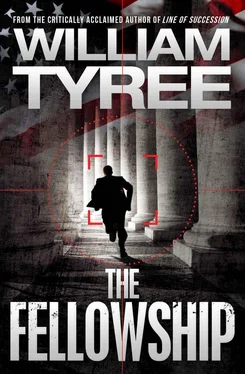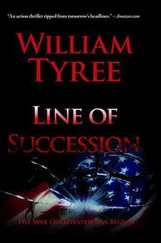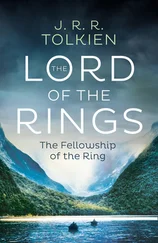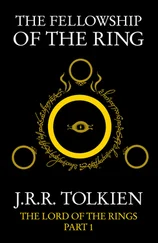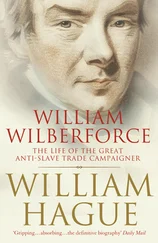William Tyree - The Fellowship
Здесь есть возможность читать онлайн «William Tyree - The Fellowship» весь текст электронной книги совершенно бесплатно (целиком полную версию без сокращений). В некоторых случаях можно слушать аудио, скачать через торрент в формате fb2 и присутствует краткое содержание. Год выпуска: 2013, Издательство: Massive, Жанр: Триллер, на английском языке. Описание произведения, (предисловие) а так же отзывы посетителей доступны на портале библиотеки ЛибКат.
- Название:The Fellowship
- Автор:
- Издательство:Massive
- Жанр:
- Год:2013
- ISBN:нет данных
- Рейтинг книги:5 / 5. Голосов: 1
-
Избранное:Добавить в избранное
- Отзывы:
-
Ваша оценка:
- 100
- 1
- 2
- 3
- 4
- 5
The Fellowship: краткое содержание, описание и аннотация
Предлагаем к чтению аннотацию, описание, краткое содержание или предисловие (зависит от того, что написал сам автор книги «The Fellowship»). Если вы не нашли необходимую информацию о книге — напишите в комментариях, мы постараемся отыскать её.
The Fellowship — читать онлайн бесплатно полную книгу (весь текст) целиком
Ниже представлен текст книги, разбитый по страницам. Система сохранения места последней прочитанной страницы, позволяет с удобством читать онлайн бесплатно книгу «The Fellowship», без необходимости каждый раз заново искать на чём Вы остановились. Поставьте закладку, и сможете в любой момент перейти на страницу, на которой закончили чтение.
Интервал:
Закладка:
“Kiss him,” his mother had demanded. “Kiss your father goodbye.”
Now Nagel’s hand was pressed firmly into Wolf’s back, pressing him toward the open chest. “Bear witness to those who have served before you.”
The other cadets parted before him, clearing a path. To Wolf’s great relief, there was no body in the iron chest. It was instead filled with thousands of skull rings. The front of each ring bore the death skull and crossbones emblem of the SS.
“Closer,” Nagel urged, pressing harder, and as Wolf bent down, he saw that the rings were far from identical. The type and number of Nordic runes engraved on the sides varied. The insides of the bands were personalized, with the surname of the soldier and the date of issue.
“Read the names,” Nagel demanded.
Wolf knelt closer. “ Maier, 4-4-1939. Muller, 12-5-1941. Patzwall, 9-3-1937.”
“When an SS officer dies, his ring is sent to the castle to rejoin the others in this chest.” Nagel pointed to the copper containers. “His ashes are placed there, in view of the eternal pyre, which is never extinguished. My hope for you, my boys, is that you will have the privilege of revisiting this room exactly twice. Once in body, and once in spirit.”
The sheer number of rings was staggering. So many dead. And these were only Germany’s so-called elite, Wolf realized. SS soldiers were not multi-ethnic, as were the Waffen-SS and Wehrmacht , and so there were far fewer of them. They did not form regular combat divisions and so, he had assumed, they did not die in great numbers when compared to Germany’s regular land or naval forces. And yet the chest was filled to the brim. So much sacrifice. So much wasted blood.
He straightened himself and backed up, stepping on the steel toes of his fellow cadets’ shoes. He looked around, studying the boys’ faces. He saw conviction. Earnestness in their tight-lipped expressions. Only this morning, any of them would have preferred to rush a line of Russian machine guns rather than join the Ahnenerbe. But that had all changed. Wolf could feel it. Now they were ready to be wedded to this ideal of eternal brotherhood. Nagel had presented the boys with an opportunity not just to join the SS, or the Ahnenerbe, but also to be eternally sealed in a family of modern-day Teutonic Knights.
*
They marched again. Up a twisting staircase, down a hall filled with deer taxidermy, and down again. Through a cold, unlit passageway that left Wolf disoriented and unaware of anything except the hunger pains in his stomach and the sound of the other boys’ boots on the castle floor.
At last they approached a warm orange light. Squeezing through a tiny corridor, they did not walk into the castle’s north wing so much as they were born into it. Like the Vault, it was circular with a high-domed ceiling and a marble floor and was illuminated by candlelight from four iron chandeliers. At its center was a black sun symbol with 12 jagged arms. Twelve stone pillars were arranged in a circular pattern, and between them hung six red floor-to-ceiling tapestries bearing the swastika emblem.
Over the center of the black sun was a modest wooden reclining chair, a stool and a tray full of sharp-looking knives and needles. A shiver coursed through Wolf’s legs. His knees felt weak.
“Attention!” Nagel shouted. The boys lined up shoulder-to-shoulder and stiffened their posture. “This is the Hall of Supreme Generals. This room is the center of the Reich and, in fact, is the center of the universe. Here you will assume the mark of the Ahnenerbe and enter officially into the sacred brotherhood of the SS.”
Wolf had been so entranced by Nagel’s oratory that he had not noticed two men standing near one of the pillars. SS officers with silver physician’s patches on the lapels of their uniform.
“You will now recite the oath of allegiance to the Schutzstaffel ,” Nagel stated. “Repeat after me. I vow to Adolf Hitler imperturbable loyalty.”
The boys repeated in unison.
“I vow to him and to the leaders that he sets for me, absolute allegiance.”
The recruits mimicked his tone, their voices stronger now.
“Adolf Hitler: Sieg Heil !”
The feeling of speaking as one, moving as one, was oddly comforting. He thought of Beck and the sensation of being led through synchronized calisthenics — at times in full darkness — with 200 of his fellow cadets, acting as one collective organism, was as essential as breathing. He dreaded the absence of his morning routine more than he feared the castle itself.
Sensing Wolf’s wandering attention, Nagel placed a hand on his shoulder and pulled him out of line. “First initiate,” he announced, guiding Wolf to the chair in the center of the room alongside the tray of knives and needles. “This is Sebastian Wolf,” Nagel told the physicians. “Age 15. Blood type O.”
He was ordered to remove his jacket and shirt. He obeyed quickly, hoping to disguise the trepidation coursing through his body. One of the physicians pressed him into a reclining position and raised his left arm over his head. The physician held a large, two-coil tattoo machine that had the letters MADE IN THE USA imprinted on the copper-colored metal. The needle was fat, tapering to form a point at the end. A wire covered by thick black insulation protruded from the bottom, snaking across the floor to some unseen power source.
“This will hurt,” the attending physician said unapologetically. He took hold of Wolf’s arm, pressing it alongside his head, flush with Wolf’s left ear. The primary doctor touched the tattoo machine needle to the underside of Wolf’s bicep. Painful vibrations flashed through his body as the machine whined.
Nagel turned and spoke to the other boys. “The identification of blood types was innovated through the ingenuity of the German people,” he said. “But SS officers alone have the privilege of wearing the blood type tattoo. In the event that you need a transfusion and are unconscious, this mark may save your life.”
The physician was not gentle, but he was at least efficient. In less than a minute, a seven-millimeter ‘O’ was tattooed on the underside of Wolf’s arm. Wolf allowed himself a tight smile as the physician wiped the blood away. He had no sooner let his guard down than the assisting physician gripped his right arm and pressed it back against his right ear.
The primary moved in with the needle and began the procedure again, boring into the soft, sensitive skin. Now Wolf was delirious with pain. He closed his eyes and tried to think of his mother. But he could not. He saw only his dead father, cold and sullen in the coffin.
At last the high-pitched grind ceased. Sensing a shadow over him, Wolf opened his eyes and found Nagel holding a small pocket mirror, angling it so that Wolf might see the new markings. He focused on the tiny smudge of newly inked skin. Not another “O.” This was Tyr, the spear-shaped rune.
Nagel gave no explanation for this, and none was needed. Lessons about the meaning of ancient Nordic myths dominated Reich School literature classes. Tyr, the Nordic god of war. Tyr, the symbol that German runologists associated with energy and magic, connecting the heavens and earth with man. Tyr, the rune Himmler ordered carved into the steel of daggers, swords and even infantry rifles.
But to carve Tyr into one’s flesh was overtly mystical. It was said to have been done by ancient Nordic warriors so that if a Valkyrie decided that they must die in battle, they might be recognized as a true warrior and brought to Valhalla, the magnificent hall of dead warriors ruled by the Norse god Odin.
The commandant helped Wolf to his feet, where he stood shirtless and bleeding from both arms. Nagel held a golden chalice before him, on which an eagle with eyes of garnet clutched a swastika-emblazoned world.
Читать дальшеИнтервал:
Закладка:
Похожие книги на «The Fellowship»
Представляем Вашему вниманию похожие книги на «The Fellowship» списком для выбора. Мы отобрали схожую по названию и смыслу литературу в надежде предоставить читателям больше вариантов отыскать новые, интересные, ещё непрочитанные произведения.
Обсуждение, отзывы о книге «The Fellowship» и просто собственные мнения читателей. Оставьте ваши комментарии, напишите, что Вы думаете о произведении, его смысле или главных героях. Укажите что конкретно понравилось, а что нет, и почему Вы так считаете.
